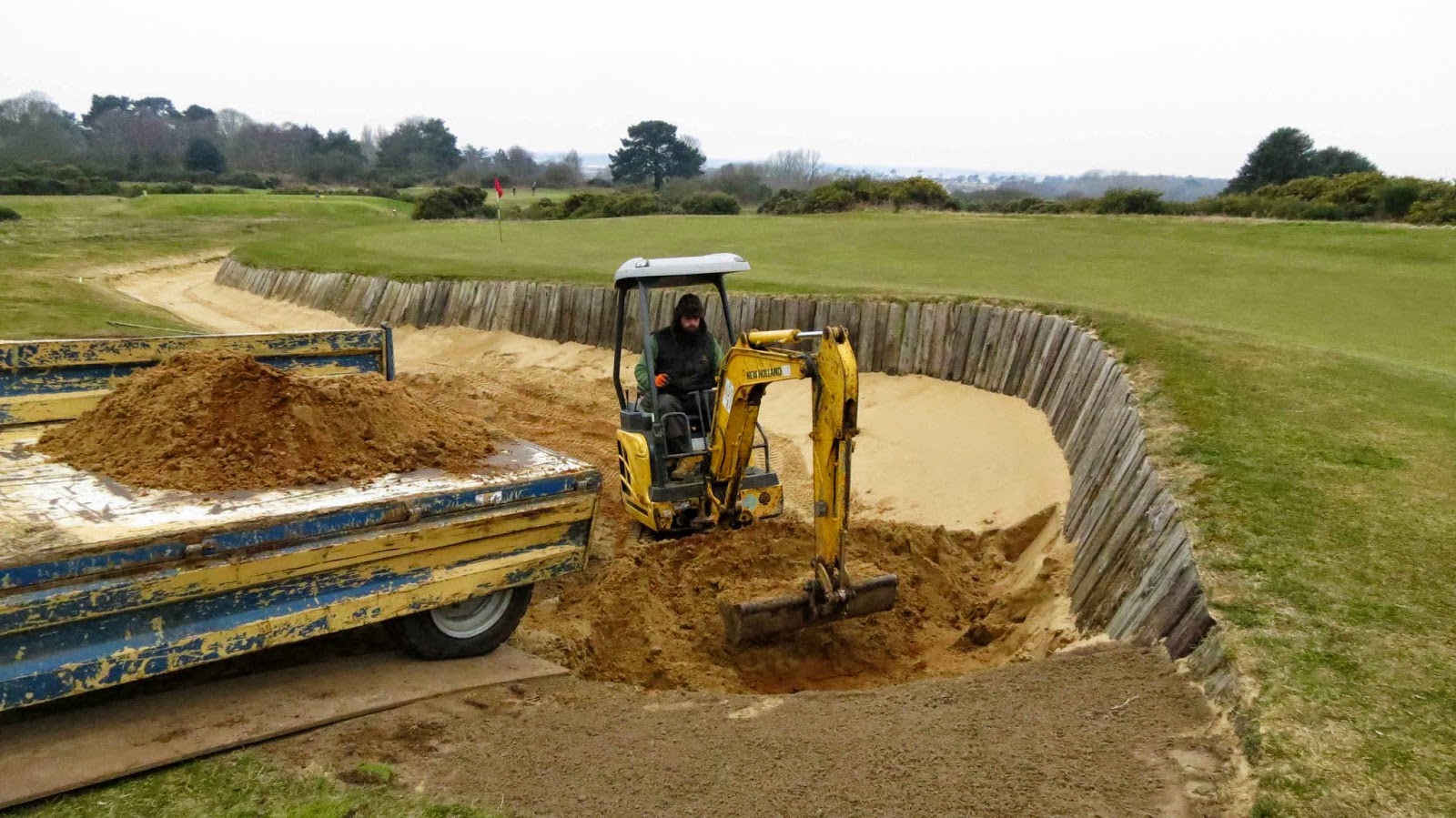The Poa annua (Poa) in the greens
is flowering at present and it will be evident to members that there is a
higher percentage of this weed grass than in previous years. The reasons for this are three fold:-
·
The
last two winters have been mild and wet and these conditions are ideal for Poa,
which is a winter annual that sets its seed in the spring, germinates in the
autumn, establishes over the winter
before seeding again.
·
The
summer of 2014 was wetter than average so we had few opportunities to dry out
the greens. Poa dies back under drought
stress which is our main weapon against it.
Our inability to create such stress during the summer meant we came into
2015 with a higher than normal percentage of Poa in the greens.
·
The
colder than average weather this spring has given the Poa the opportunity to
get established with little competition from the slower growing fescue, which also
starts growing later in the spring, and has given rise to the increased seeding
we now see.
 |
| The photo on the left shows Poa annua with seed heads in amongst fescue on a green and the right photo is Poa annua under drought stress in apron turf. The wiry grass that is still green in the right hand photo is the fescue that we want to be the dominant species |
The importance of keeping a low
percentage of Poa in the greens can’t be overemphasised as it is the fine
Fescue and Bent grasses that give us the highest quality and most consistent year
round putting surfaces. Our entire
maintenance programme is formed around encouraging the finer grasses and
discouraging Poa. Everything from height
of cut and fertiliser programme to aeration has an impact but moisture levels
in the soil are the strongest influence on the ability of Poa to get
established and survive in our greens.
The increased level of Poa currently
present in the greens means we will be taking an aggressive approach to
removing it through cycles of drying out whenever the weather permits. During the drying cycles members may notice
the greens being a little firmer than usual with the potential for loss of
sward density as the Poa dies out. Whilst
we will monitor and control these cycles very carefully this essential action may
have a short term negative impact on the quality of the putting surfaces. However, it is necessary to prevent long term
deterioration and maintain our reputation for high quality greens all year
round.
We are expecting delivery of a
new over seeding machine next month and this will be used over the next few
years to continue our programme of sowing high quality fescue cultivars into
the greens. Having our own machine will
enable us to choose the optimum moment(s) during the year to undertake this
over seeding rather than having to book a hire slot several months in advance
in the hope that the weather conditions are optimal when it arrives.
As highlighted in the Course
Development Plan increasing the percentage of modern fescue cultivars, which have
far superior performance to the old varieties present in our greens, is a central
part of our strategy for maintaining and improving green quality over the
coming years. These cultivars produce a
denser, finer leaved turf which is more resistant to Poa ingress than the more
open turf produced by the older cultivars.
As these modern cultivars fully establish the need to undertake
aggressive drying out cycles, such as planned this year, will diminish which
will also assist in maintaining high green standards going forward.










































